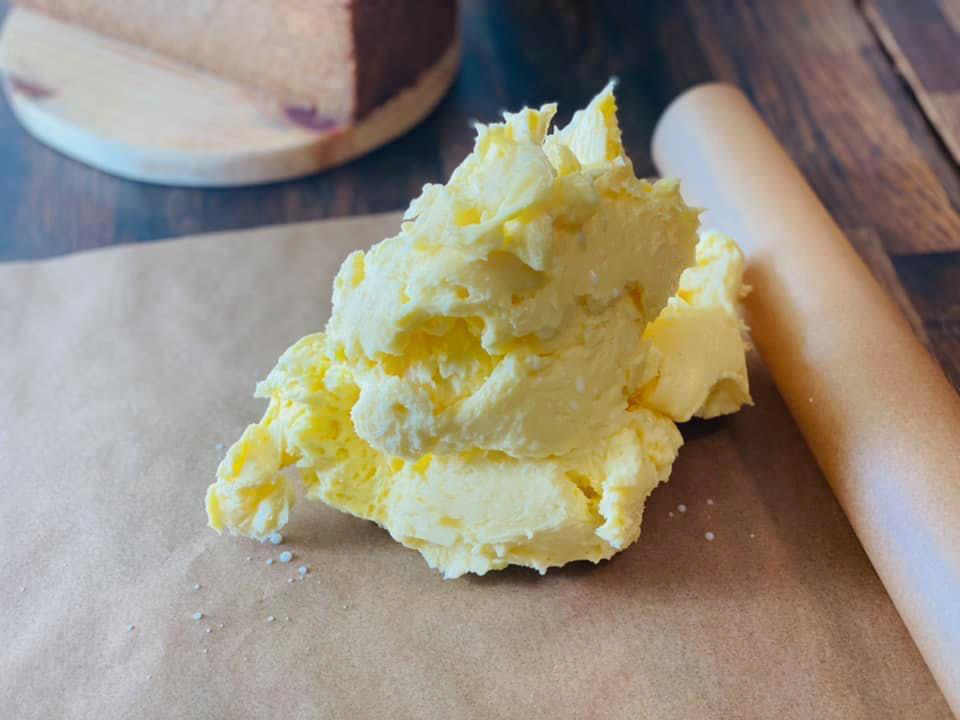 🖨️ Print post
🖨️ Print post
Koji is dried fermented rice. “The enzymes contained in Koji help to regulate the intestinal environment by promoting digestion and absorption and increasing beneficial bacteria in the intestines.” Letting the cream ferment with live bacteria before churning creates a tangy version called cultured butter. Fermentation of butter also increases its milk fat content, resulting in a creamier texture, it makes the butter more silky and gives it a richer taste.
Many of the unique attributes of cultured butter are brought about by the formation of lactic acid. As the added live bacteria feed on the sugars in cream, lactic acid is formed as a by-product. This creates the noticeable tanginess in cultured butter. Bacteria also break down lactose (milk sugar) and casein (milk protein) in cream that are difficult to digest, making cultured butter friendlier to the tummy.
Helpful bacteria helps strengthen our immune system, keeps pathogenic bacteria from producing and helps digest our food.
Cultured butter keeps many of the enzymes that are destroyed during pasteurization. These enzymes are not only needed to help digest our food but to absorb calcium and other minerals. Both vitamins B and C are higher in cultured dairy products.
Ingredients
- 64 oz heavy cream from pasture-raised animals, preferably raw
- ½ tsp Koji – I used the one linked to and grinded it.
- 2 tbsp sour cream
Instructions
- Combine all ingredients in a glass mason jar and let it ferment at room temperature for 2-3 days, mix daily.
- Transfer to fridge, until it’s cold, takes a few hours.
- It’s easiest to use a standing mixer, pour cream (now it’s called creme fraiche) into the bowl and mix until butter and buttermilk separates.
- Press and smooth out with silicone spatula as much buttermilk as you can.
- Enjoy with freshly baked sourdough bread and salted whitefish and fresh dill, or any way you like.
- Definitely drink the buttermilk, it’s full of wonderful probiotics and vitamins.


Wonderful!